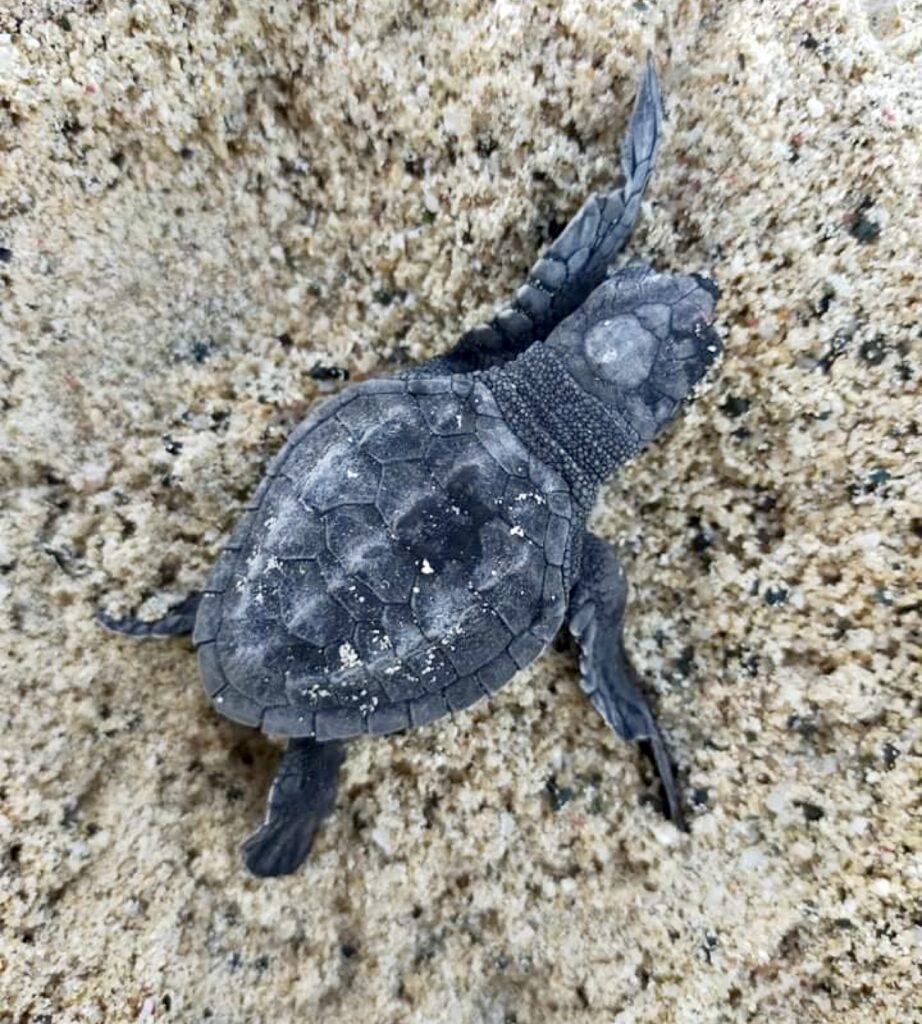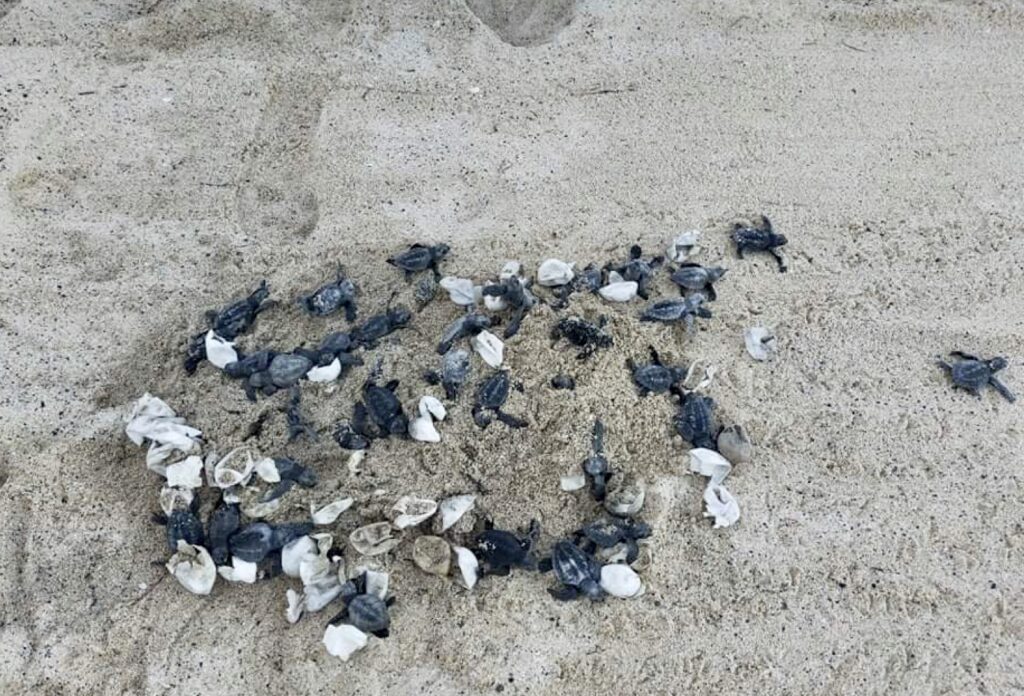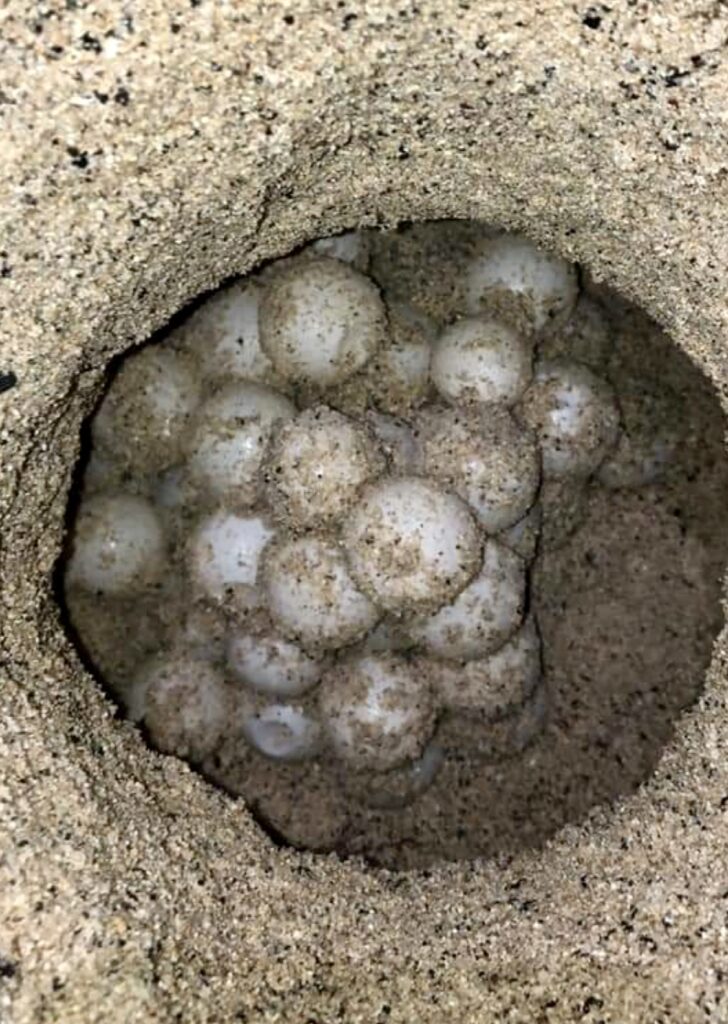Text by Henrylito D. Tacio
Photos by Winston Plaza
It’s called Turtle Islands. Located along the boundary of Malaysia and the Philippines, this group of nine islands used to be a favorite weekend destination of British excursionists and other nationals from North Borneo (now Sabah).
The islands – Baguan, Taganak, Lihiman, Boan, Langaan, and the Great Bakkungan (belonging to the Philippines) and Gulisaan, Selingan, and Bakkugan Kechil (owned by Malaysia) – are named so because they are the revered habitat of the endangered marine turtles.
What used to have roamed the tropical seas for 130 million years without much change in appearance, marine turtles are now facing extinction. As Marizal Calpito and Lourdes P. Calacal of the Department of Environment and Natural Resources (DENR) explain: “Down through the ages, they thrived, remaining much the same as their hardy ancestors.”

There are only eight species of marine turtles known. Five of them can be found in the Philippines, mostly in the Turtle Islands. These are the Green Sea (known in the science world as Chelonia mydas), Hawksbill (Eretmochelys imbricata), Loggerhead (Caretta caretta), Olive Ridley (Lepidochelys olivacea), and Leatherback (Dermocheyls coriacea).
The three other species are the Kemp’s Ridley (Lepidochelys kempi), Flatback (Chelonia depressa), and Black Sea (Chelonia agassizi).
Endangered species
Unfortunately, all eight species are listed under Appendix I of the Convention on International Trade of Endangered Species of Wild Fauna and Flora (CITES), which means the trade of these species and subspecies is strictly “prohibited except for educational, scientific or research and study purposes.”
The Conservation of Nature and Natural Resources (IUCN) has also classified the eight species as endangered. This is so because “their populations are in danger of extinction and whose survival is unlikely if the causal factors continue to operate.”
Marine turtles, known locally as pawikan, are hunted for meat and leather; their eggs are consumed because people think they are good aphrodisiacs. Most of their nesting sites are vanishing in the name of development. They are ground up by dredges, run over by pleasure boats, poisoned by pollution, strangled by trash, and drowned by fishline and net.
Despite sincere efforts by the government and environmentalists to prevent the further decimation of the marine turtle population, the gathering of turtle eggs and trading of stuffed turtles in souvenir shops remain unabated.
“If you have bought a stuffed turtle in one of those souvenir shops, you have unwittingly contributed to the extermination of an endangered Philippine wildlife species,” said a Filipino environmentalist. “Conservation of marine turtles should be the concern of all Filipinos. As a citizen, you can do your part in discouraging the sale collection, or the killing of sea turtles by not buying these or products from turtles.”
The sad thing is: the population of marine turtles continues to dwindle. “Unless we seriously take on the task of protecting the endangered marine turtles, these ancient creatures will soon be extinct,” the environmentalist deplored.
This is alarming as human beings hardly know about them. All they understand is that marine turtles belong to the order Chelonia, an order of reptiles that has existed and flourished since prehistoric times. Marine turtles can be differentiated from their terrestrial and freshwater relatives by their flattened forelimbs. Freshwater turtles have five claws on each forelimb with easily distinguishable individual digits. In comparison, marine turtles have flattened foreflippers with obscured individual digits.
Marine turtles are air-breathing reptiles that live their long legendary lives mostly in the sea. But they do spend a critically important part of their life stages in sandy beaches.
Most female marine turtles come ashore several times every two or three years to nest. Yet scientists know little about how they navigate, where they grow up, or how long they live. Why is it so difficult to study marine turtles?

Newly hatched pawikan 
Marine turtle eggs
“They’re a mystery,” said Dr. Archie Carr, a visionary herpetologist who earned the moniker ‘Father of Marine Turtle Research’ when he set up camp on the beach at Tortuguero, Costa Rica.
Several others followed suit. But despite this explosion of research, scientists are frustrated. “I don’t know any branch of science where we have applied so much effort and learned so little,” complained Dr. Richard Byles of the U.S. Fish and Wildlife Service.
But there are signs of progress. Each marine turtle species exhibits a distinctive behavior, habitat preferences, and diet requirements. But in terms of reproduction, they share some behavioral similarities.
“Under this particular life stage of marine turtle is critical to marine turtle conservation and management since it is during this period that they are most vulnerable to the adverse effects of human activities,” Calpito and Calacal asserted in their collaborative article for Canopy International.
Mating and courtship
The two authors cite Green turtle as a case in point. Mating, they say, starts with courtship. “Green turtles’ courtship behavior is a highly-charged activity punctuated by rivalry among courting males,” the two wrote. “A male communicates his intentions to a female by caressing the female’s head and by raining her heck and rear flippers with gentle bites. The courted female may indicate her refusal by facing the male in a vertical position, limbs widespread, as if emphatically declaring her rejection of the male. Or she may seek refuge in ‘no male turtles allowed’ area or simply the areas that males apparently avoid.”
If the female is receptive to the male, the male proceeds to embrace the female by anchoring his long front claws on the uppermost portion of the female’s carapace while his rear flippers secure the lower portion of his mate’s shell. This, however, does not guarantee that mating will proceed uneventfully. The drama heightens with other ardent males aggressively attacking the successful male in a bid to dislodge him from the female. The injuries are often extensive.
“Upon completion of the mating stage, nesting occurs in sandy beaches about a month after mating,” Calpito and Calacal wrote.
The turtle nesting season varies with location. In the Philippines, it starts in October, peaks in December, and ends in March. For some unknown reasons, turtles choose a favorite nesting site. Every time they nest, they always return to the place even if they are thousands of miles away from this area.
“Females would drag their bulky frame into the sand and build a nest and to eventually lay eggs,” Calpito and Calacal wrote. “Their nests are flask-shaped cavities dug in the sand by the shoveling motions of the nesting turtle’s hind limbs. Nests are built in areas that are not inundated by tides, rain, or groundwater. The sand is loose enough for gas diffusion but moist enough to keep the nest walls from collapsing.”
One nest may contain as many as 100 eggs. These are usually laid at night except for Kemp’s Ridley and Olive Ridley eggs, which are laid at daytime. “Nesting is an individual activity but undertaken simultaneously with other nesting females,” Calpito and Calacal wrote. “An individual Ridley can delay nesting in order to wait for other nesting female Ridleys.”
During the nesting season, some turtles may nest 2-11 times, depending on the species and populations. The Green turtle continually nests every year for ten solid years. Others nest every two to four years.
“If the nesting is successfully completed, the mother turtle covers and disguises the nest – apparently the only ‘maternal care’ exhibited by the mother,” wrote Calpito and Calacal. “Afterwards, she scampers toward the sea, leaving the eggs for future hatchlings to find the sea and to fend for themselves.”
After two months of being cocooned in their sandy niche, the papery eggshells erupt one after another or almost simultaneously. With vigorous trashing here and there, the hatchlings are fed from their eggshells. From a moment, trashings will come to a halt as if the hatchlings would charge into the sea, scurrying like an army seeking cover in the darkness of the night.
“This nocturnal trek to the sea can be a critical event in the lives of young hatchlings,” Calpito and Calacal wrote. “Hatchlings exhibit photo-attraction. Their complex reaction to light can be a fatal attraction because strong lights such as beach lights may lure them away from the sea. Hence, hatchlings fail to make their rendezvous with their aquatic home and they die.”
Most abundant species
Of the five marine turtles found in the Philippines, the Green Sea turtle is the most abundant. They have been sighted as far north as the Fuga Islands in Cagayan and in the Southwest in Bancuran, Palawan. Because of its tasty meat, it is also the most threatened.
The Hawksbill turtle is considered the most beautiful of all sea turtles. It differs from other species by the overlapping scales on its top shell. Its color varies from brown to yellow-brown, with the bottom shell (plastron) in shades of yellow or white. This species inhabits the Celebes Sea, the Cuyo island group of Palawan, neighboring towns of Jolo, Cotabato, and Sitangkai in Tawi-Tawi, as well as in Sablayan in Occidental Mindoro and the open waters of the Sulu Sea.
Although rarely seen in the country, the Leatherback turtle is the largest of all the marine turtles. It may grow up to more than two and a half meters long and weigh as much as 800 kilograms. Instead of a shell, thick skin with seven long ridges or keels serves as the turtle’s protection. Its leathery back gave it its name.
Leatherback turtles are generally black with white spots. Muslim fishermen consider the appearance of this turtle as a bad omen. Others hunt it for the pearl found on the pouch of its lower jaw. This turtle feeds primarily on jellyfish and roams the open seas.
The Olive Ridley turtle, or so-called lambanagan, can be distinguished from the other species by five or more scales on its back. It has a distinct olive-brown color. These turtles have been seen by fishermen in the shallow coastal waters of Paluan, Occidental Mindoro.
The Loggerhead turtle is a big-headed turtle weighing up to 200 kilograms. It feeds primarily in estuaries and along the continental shelf, using the jaw muscles that make up most of its oversize head to crush mollusks and crustaceans.
Importance of marine turtles
Since the dawn of history, the meat of marine turtles has supplemented the diet of man, and its shell has gratified his sense of beauty in more ways than one. Seventeenth-century seafaring men used turtles as ship’s provisions – their ability to stay alive for months without food and water ensured a steady supply of fresh meat without storage problems.
Aside from their meat, marine turtles are also valued for their eggs, which look like ping-pong balls and rounder than chicken eggs. The yellow or yolk of turtle egg is considered medicinal by some people. When hard-boiled, the white or albumin does not congeal like that of the eggs of fowls. Many consumers dry turtle eggs under the heat of the sun before eating them, supposedly to give the eggs better flavor. In some parts of the country, eggs of Green Sea turtles are gathered and sold in the market for at least P5 apiece.
“If these practices (of gathering eggs) continue, the Green Sea turtles would permanently vanish from the face of the earth,” said an environment and natural resources officer.
Rural fisherfolk have been using marine turtle blood, hatchlings, and liver as a cure for asthma. Others gather the turtle’s tail for its aphrodisiac properties. The bone gives an excellent soup, which the Chinese consider as a delicacy.
Marine turtles are also hunted to make different products. The Hawksbill’s carapace is used to make combs, brush handles, eyeglass frames, buttons, hair clips, and jewelry.
Immature Hawksbill and Green Sea turtles are killed and stuffed for ornamental purposes like home decor.
Pollution has also been cited as one of the prime factors why the population of marine turtles is dwindling rapidly. Marine turtles were once seen in abundance in the shallow waters of Manila. But toxic wastes flowing from the Pasig River, ocean-going vessels plying the bay, and the government’s reclamation projects had long ago driven the marine turtles away.
Many marine turtles die after eating discarded plastic bags.
These beautiful, migratory reptiles face danger from the day they are born (they are hunted by monitor lizards or bayawak, dogs, and ghost crabs). Hatchlings being inexperienced feeders, ingest plastic waste around them. They become so buoyant by consuming plastics that, unable to dive for food, they starve.
Dynamite fishing and the use of trawl nets where turtles abound have also threatened the marine turtles. Ditto for the rapid development of beach resorts for the tourism industry, as these destroy the nesting beaches of marine turtles.

